| Reviews & Columns |
|
Reviews DVD TV on DVD Blu-ray 4K UHD International DVDs In Theaters Reviews by Studio Video Games Features Collector Series DVDs Easter Egg Database Interviews DVD Talk Radio Feature Articles Columns Anime Talk DVD Savant Horror DVDs The M.O.D. Squad Art House HD Talk Silent DVD
|
DVD Talk Forum |
|
|
| Resources |
|
DVD Price Search Customer Service #'s RCE Info Links |
|
Columns
|
|
|
Film Noir: Five Classics from the Studio Vaults
THE MOVIES:
Film noir has always been a favorite genre of mine. I like the tough patter, the labyrinthine plots, and, of course, the look of them--wet streets, long shadows, gorgeous girls in glamorous dresses and tough guys in tailored suits. There is a lot of noir out there, though, and so it can take some effort to keep track of all the discs the various companies put out. Last year, Kino gathered five of their mid-line film noir releases into one box and called it The Dark Side of Hollywood, giving collectors a chance to pick up several titles at a bargain price. It must have done well, because they;ve repeated the practice this year, packing five more crime movies into one slipcase and calling it Film Noir - Five Classics From the Studio Vaults. The credits list on the back of the box reads like an impressive who's who, bringing together work by directors like Anthony Mann, Michael Powell, Fritz Lang, and Ida Lupino and featuring actors like Edward G. Robinson, Edmond O'Brien, Conrad Veidt, Trevor Howard, Dan Duryea, and the most fatal of the femmes, Joan Bennett.
Once again, the price is absolutely right. Retailing at $49.95, you can barely pick up any two of these movies for even that cheap, as on their own they retail between $25 and $30 (unless you look for the super cut-rate knock-offs; these movies are largely in the public domain). Taking the pictures from both the U.S. and the U.K., Kino has traveled to the outer fringes of the darker B-movies, and though not all of them are prizes, the value is there.
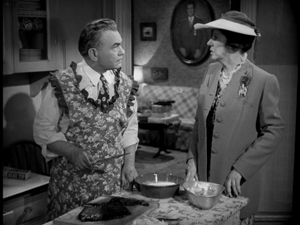
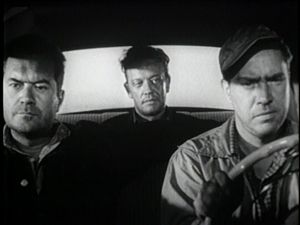
(left to right): Scarlet Street, The Hitch-Hiker
* Scarlet Street (101 minutes - 1945): Fritz Lang practically invented showing the perils of a guilty conscience on film when he made M in Germany fourteen years earlier. Scarlet Street continues this obsession with the evil that men do, casting Edward G. Robinson as the meek bank teller Christopher "Chris" Cross. This man's existence is a full-fledged illustration of the phrase "a life of quiet desperation." Married to a shrew of a wife who keeps a painting of her dead husband hanging up in their living room and doling out cash day in and day out while having none of his own, Chris' only solace is in the humble paintings he does in his spare time.
Then one night he happens upon a pimp (Dan Duryea, Black Angel) beating on his girl, Kitty (Joan Bennett, The Reckless Moment). Cross steps in, ingratiating himself to the girl and unwittingly getting pulled into a long con. She convinces him to set her up in an apartment where he can paint, and not wanting to tell her he's a nobody, he steals money to pay for it. She strings him along, eventually passing off his art as her own and sucking him deep into a tangled web of deceit that he can only see one way out of.
Lang and the main cast had first teamed up the year before in another classic noir, The Woman in the Window, and they clearly had something going together. Robinson is incredible as the shy and broken banker, showing great restraint and pathos. Duryea is a dirty lout that just oozes scum, and Joan Bennett is perhaps best of all, playing a woman who uses her sexuality to get what she wants but also showing how unsophisticated she really is. On her first night out with Cross, she orders a Rum Collins and drinks it with a straw, letting it dangle from her mouth as she talks. Cross is attracted to her as an old man looking at a woman whose childishness he mistakes for freedom.
The plot of Scarlet Street is full of twists, but it's also brimming with cynicism. In this bent love triangle, no one is innocent, and thus no one escapes punishment. Yet, even beyond the core characters, the people in Cross' life are no more innocent, taking full advantage of the man's nature, sometimes right out in the open, but also with tactics as underhanded as Kitty's. It's just that they have the approval of society to do it, and it's no wonder that a man would break when the world has made it okay to hold him down.
* The Hitch-Hiker (70 min. - 1953): A cult favorite, The Hitch-Hiker is a nerve-wracking thriller from the pioneering female director Ida Lupino (We're No Angels). Based on a true incident, Lupino and Collier Young have crafted a nail-biter that is a race against death, a mental battle of good and evil.
Two buddies (Edmond O'Brien and Frank Lovejoy) are heading down to Mexico to take a fishing trip away from work and the family. They pick up a hitcher, Emmet Myers (William Talman), oblivious to the news reports warning drivers of a deadly convict thumbing his way down the coast and killing those unlucky enough to let him in their car. Myers forces the men to take him through Mexico, making it clear that somewhere along the way, he'll kill them. The men bide their time, looking for an opportunity to break free, while Mexican and U.S. police try to catch up with them.
The Hitch-Hiker is pure tension. Each stop could be the last. We never know when Myers will unleash his violent fury, or if either of the fishing buddies will finally take their shot. O'Brien plays the more impulsive half, and the one who will eventually break down, whereas Lovejoy is cool and collected, trying to stay one move ahead of Myers' bullet. As Myers, Talman is a brutal menace. He has one bad eye that never closes, so he's always watching, even when he's sleeping. Lupino portrays him as completely without feeling, a thug who thinks guys with normal lives are suckers, oblivious to the irony that his life is a bigger trap than a family and a job could ever be.
As twisting and turning as the Mexican highway, The Hitch-Hiker never lets up. Its short running time is a blessing. I am not sure I could hold my breath much longer.
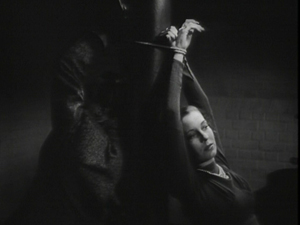
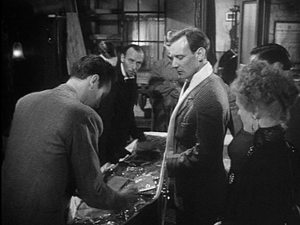
Contraband, They Made Me a Fugitive
* Contraband (88 min. - 1940): Not really a noir, more of a wartime thriller in the vein of other Eric Powell and Emeric Pressburger collaborations like The 49th Parallel and One of Our Aircraft is Missing. In Contraband, a Danish cruiser is stopped at an English port so the British Navy can make sure they aren't smuggling any illegal goods to the Axis powers. Though the stern Capt. Andersen (Conrad Veidt, Casablanca) will be your number-one suspect for the movie's bad guy, he's really on the up and up. Instead, two of his British passengers (Valerie Hobson and Edmond Knight) have absconded with a pair of shore passes, and Andersen has to track them down in order to keep his ship from landing in hot water. He manages to get his hands on the woman, and discovers that there is more going on than simple theft. Spies in the London underworld!
Contraband is the kind of paranoid semi-propaganda that spawned many a great WW II-era motion picture. I probably prefer it to the other two later Powell & Pressburger movies I already mentioned, in that it wears its intentions less on its sleeve, putting the suspense in the seat of highest importance, as well as indulging in some Hitchcockian black humor. The script is constructed well, throwing lots of curveballs at the audience. A solid wartime action flick.
* They Made Me a Fugitive (96 min. - 1947): This British thriller from Brazilian director Alberto Cavalcanti has some fantastic concepts and images, but is a bit lacking at times when it comes to presentation.
Trevor Howard, in perhaps his most rugged role, plays Clem, a veteran of WWII who has fallen into a bad crowd of black marketeers. Run by Narcy (Griffith Jones), a brutal criminal whose full name is the more fitting moniker Narcissus, the gang operates out of a funeral home, carrying their ill-gotten gains in and out concealed inside coffins. (A giant R.I.P. sign stands atop the hideout, casting a shadow on everything, just one of the various awesome visual conceits in the movie.) When Clem discovers they are smuggling drugs, he decides he wants out, and instead of letting him go, Narcy frames him for murdering a cop. Eventually, Clem breaks out of prison, looking to get back his life and the girl Narcy stole, ultimately getting involved with Sally (Sally Gray), the woman Narcy jilted at the same time.
With a story like this, the movie should move at a breathless pace, something more akin to The Hitch-Hiker; instead, it is often stiff and slow. The climactic brawl in the funeral parlor is intended to be a chaotic whirlwind of flying fists, but it plods along, stuttering on Cavalcanti's odd cutting around the room, freezing on faces rather than sticking to the action. I will say this, though, They Made Me a Fugitive has one of the biggest downers of an ending you can expect to find in film noir. Don't watch it unless you're prepared to lose a little more faith in the human race.
Speaking of losing faith in endings...
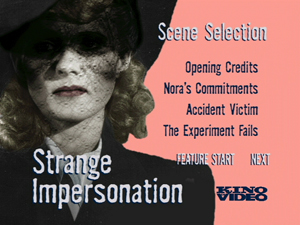
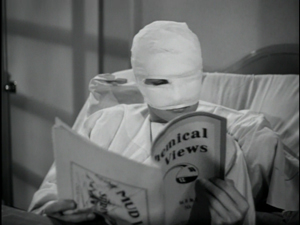
Strange Impersonation
* Strange Impersonation (68 min. - 1946): Anthony Mann is known for his two-fisted, hard-edged crime thrillers like T-Men and Railroaded. In this odd genre bender, he sends the tough guys packing and trades them for some dames--brainy scientist dames, at that. Nora Goodrich (Brenda Marshall, The Sea Hawk) is working on a risky experiment involving anesthesia. One night, when working at home to avoid red tape, her scheming assistant Arline (Hillary Brooke) tries to kill her in a chemical explosion. Arline wants Nora's fiancée, fellow scientist Stephen (William Gargan, The Bells of St. Mary's) all for herself, so it's the ultimate of ironies when Stephen breaks in and saves Nora at the last second.
Only Nora isn't entirely rescued--her face is horribly scarred. After Arline works her devilish magic to drive a wedge between the wounded woman and her would-be husband, circumstances align to allow Nora to use plastic surgery to assume a new identity. She returns to the labs to find out what happened, only to find a secret identity is a trickier business than she expected.
Strange Impersonation is a tight piece of work, wasting no time with unnecessary exposition or subtleties. Mann folds a little mad science into his story, working with horror tropes, the bandaged face of Nora being as reminiscent of Eyes Without a Face as it is Humphrey Bogart in Dark Passage. The film lacks any lofty pretensions whatsoever, and on a purely visceral level, I was loving every minute. Unfortunately, Mann and screenwriter Mindret Lord blow the whole thing by pulling out a long-in-the-tooth cliché from the Bad Ending Handbook. It's like they were making a Brian De Palma movie long before Brian De Palma was even born. Do yourself a favor and hit stop when Nora breaks down in a fit of madness in the police station. You'll thank me.
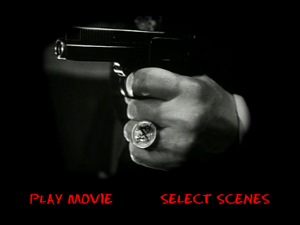
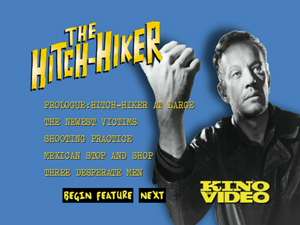
They Made Me a Fugitive, The Hitch-Hiker
THE DVD
Video:
All five movies are full frame, all black-and-white. All of them have some kind of issues with the image transfer, but the size of those issues vary. Scarlet Street, being the most recent release on its own (it's a 2005 DVD), gets off the best. The new digital transfer was taken right from a 35mm negative, and so even though there are scenes that still have some kind of surface noise, the underlying image looks crisp. Contraband follows a little bit after, showing the least amount of wear and tear.
Strange Impersonation is a mid-level transfer, with some dirt and fuzz, but not too many errors that really leap out at you. Same with The Hitch-Hiker, where the main problem is that the image always appears distant, like it's a dupe of a dupe. (Likewise with its audio, which seems at times like you are listening through the wall to a TV in another room.)
They Made Me a Fugitive is the absolute bottom. It has just about every problem you can think of: fuzzy image, scratches and dirt, shaky cuts, and missing frames.
Sound:
The sound quality is all over the map, with no fancy new sound mixes or subtitles to speak of. Generally, the audio matches the picture, meaning that, for instance, They Made Me a Fugitive has awful soundtrack issues. There is a persistent hum underneath most of the movie, as well as several scenes with static in the background.
Strange Impersonation sounds mostly clear, but the audio levels are so low, you really have to crank the volume to hear it. Again, Scarlet Street is the best, with the bare minimum of audio hiss to mar the soundtrack.
Bonus Features:
Most of the DVDs don't have any extras. Plus, even though they have a chapter selection menu, both The Hitch-Hiker and Stange Impersonation go straight into the movie instead of actually loading into the menu and asking you to press play. There are no bonus supplemental materials exclusive to the box, either, just a cardboard slipcase and the movies repackaged for slimline trays.
The only movie to come with extras is Scarlet Street. It has a full-length audio commentary by Fritz Lang-scholar David Kalat. It also has an image gallery featuring promotional items and still photographs, including three photos showing scenes that were deleted from the final cut. Short descriptions explain what those scenes were, and in one case, we actually get the original pages from the screenplay.
FINAL THOUGHTS:
Recommended. Film Noir - Five Classics From the Studio Vaults is a solid low-price collection. Though not all the DVDs are up to snuff in the tech department, and neither are all the movies, you are going to want at least three of these--Scarlet Street, The Hitch-Hiker, and Contraband--in your collection, and this route is cheaper than buying them separately. You can then consider the Anthony Mann film a bonus and They Made Me a Fugitive is innocuous enough not to sour the experience. Not as good as last year's set, but still not bad for bargain-shopping noir fans.
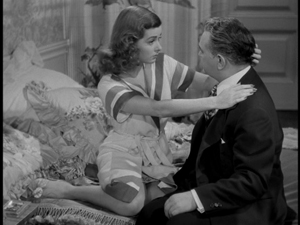
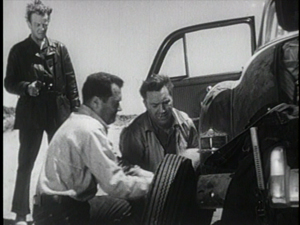
Scarlet Street, The Hitch-Hiker
Jamie S. Rich is a novelist and comic book writer. He is best known for his collaborations with Joelle Jones, including the hardboiled crime comic book You Have Killed Me, the challenging romance 12 Reasons Why I Love Her, and the 2007 prose novel Have You Seen the Horizon Lately?, for which Jones did the cover. All three were published by Oni Press. His most recent projects include the futuristic romance A Boy and a Girl with Natalie Nourigat; Archer Coe and the Thousand Natural Shocks, a loopy crime tale drawn by Dan Christensen; and the horror miniseries Madame Frankenstein, a collaboration with Megan Levens. Follow Rich's blog at Confessions123.com.
|
| Popular Reviews |
| Sponsored Links |
|
|
| Sponsored Links |
|
|
| Release List | Reviews | Shop | Newsletter | Forum | DVD Giveaways | Blu-Ray | Advertise |
|
Copyright 2024 DVDTalk.com All Rights Reserved. Legal Info, Privacy Policy, Terms of Use,
Manage Preferences,
Your Privacy Choices | |||||||














